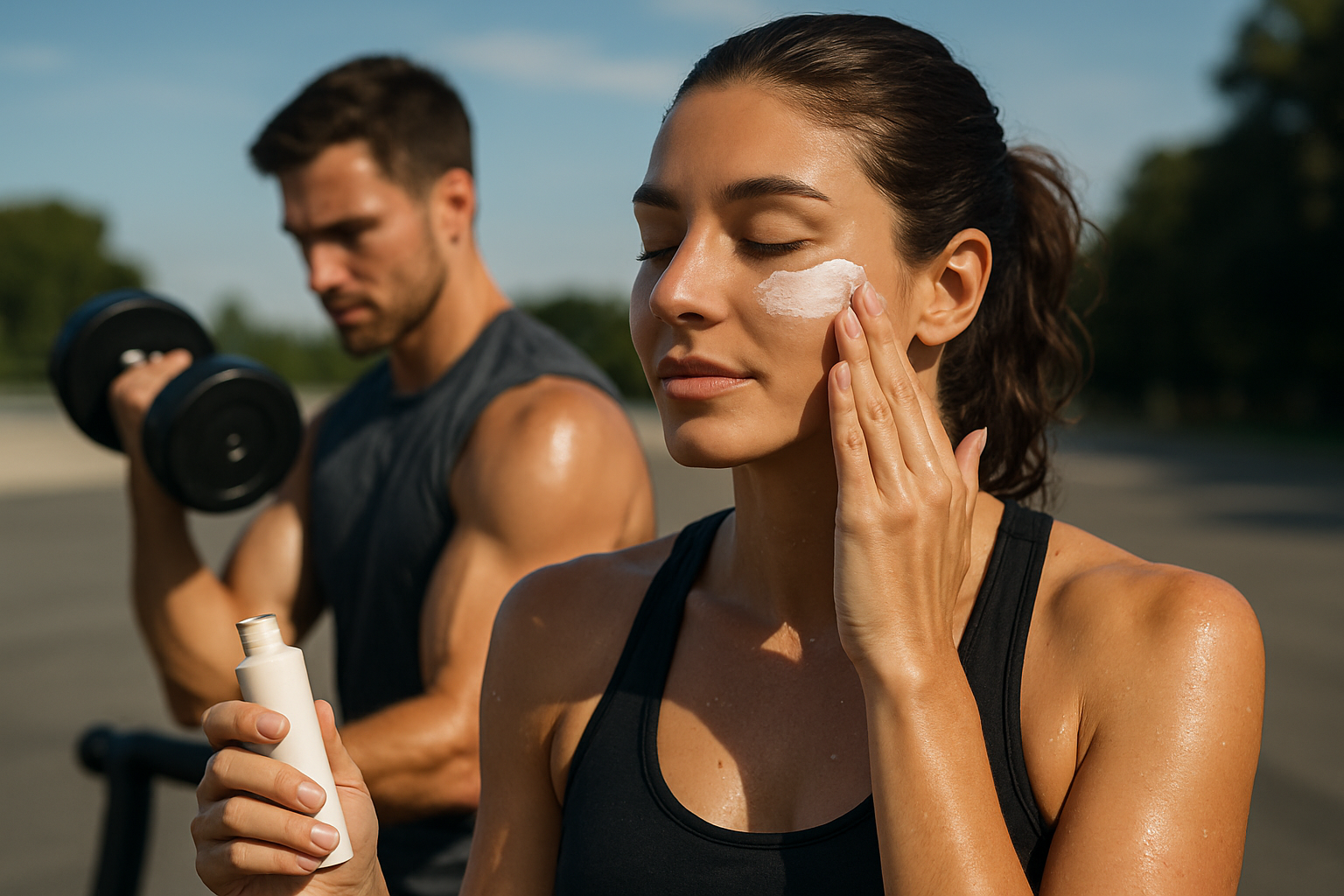Choosing Exercise-Friendly Sunscreens and Protective Gear
Selecting sunscreens and protective gear that suit active routines helps protect skin and support performance. This piece outlines practical choices for outdoor and indoor exercise, balancing sun protection, comfort, and considerations like hydration and recovery to keep skin and body resilient.

Protecting skin and body during exercise combines practical sun care with gear choices that preserve mobility and comfort. For active people, choosing a sunscreen that won’t run into eyes, rub off with sweat, or clog pores is as important as selecting breathable clothing, hats, or eyewear that won’t restrict movement. Consider how products interact with hydration, recovery, and training demands to maintain skin health and performance over time.
This article is for informational purposes only and should not be considered medical advice. Please consult a qualified healthcare professional for personalized guidance and treatment.
How does sunscreen fit into skincare and haircare?
An exercise-friendly sunscreen should integrate with your broader skincare routine: non-comedogenic formulations reduce the risk of breakouts after sweaty sessions, while mineral or broad-spectrum filters protect against UVA and UVB. For haircare, look for lightweight sprays or leave-in conditioners with UV protection to shield the scalp and strands without weighing hair down. Reapplication matters: water- and sweat-resistant labels indicate longer persistence, but frequent rubs and towels still remove product, so plan reapplication around workout length.
How to choose for hydration, nutrition, and recovery?
Sun protection interacts with hydration and recovery needs—sunscreens that irritate skin can impair post-workout skin repair, while heavy creams may feel uncomfortable when you’re hot. Pair topical care with internal strategies: maintain hydration with electrolytes as needed, prioritize nutrition that supports recovery (protein, antioxidants), and use gentle cleansing after exercise to remove residue. Proper skincare habits can support recovery by minimizing inflammation and allowing skin to rebuild its barrier function.
Which features support strength, flexibility, and mobility?
Protective gear should enable full range of motion. Compression garments and supportive braces can aid strength and recovery when fitted correctly, but choose fabrics with good stretch and breathability to preserve flexibility and mobility. For sun protection, lightweight UPF clothing and wide-brim hats offer constant coverage without the need for reapplication, reducing interference with performance. Avoid stiff or bulky pads that impede movement during dynamic activities.
What protects endurance during prolonged activity?
For endurance sessions, prioritize long-lasting, sweat-resistant sunscreens and breathable protective accessories. Look for formulations labeled for sport use—these often balance durability with skin comfort. Sunglasses with proper UV protection and ventilated frames reduce eye strain and fogging across long hours. Consider how sunscreen interacts with hydration breaks and nutrition timing: plan reapplications or switch to UPF clothing if frequent rubbing or sweating will remove topical protection.
Can topical ingredients like collagen and antioxidants help?
Topical antioxidants can complement sun protection by reducing oxidative stress on skin exposed to sunlight and exercise-induced free radicals. Ingredients such as vitamin C or vitamin E are commonly included to support overall skin resilience; however, collagen in topical products typically addresses surface hydration rather than rebuilding deeper structures. Use antioxidant-containing serums in your routine outside of immediate pre-exercise application to avoid irritation, and rely on proven sun protection steps as the primary defense.
How does sleep and probiotics affect skin and exercise readiness?
Quality sleep and gut health influence skin repair and exercise readiness. Poor sleep impairs recovery and may worsen inflammation, while balanced nutrition—potentially including probiotics where appropriate—can support overall wellness that reflects in skin condition. These lifestyle factors interact with topical care: a consistent routine that includes sleep, hydration, and balanced nutrition helps maintain a skin barrier that tolerates frequent exercise and sunscreen use.
Conclusion Choosing exercise-friendly sunscreens and protective gear is about balancing reliable UV protection with comfort, breathability, and compatibility with your training routine. Combine appropriate topical products with UPF clothing and well-fitted protective accessories to maintain mobility and endurance. Support these choices with hydration, nutrition, sleep, and post-workout recovery habits to keep both skin and performance in good condition.





